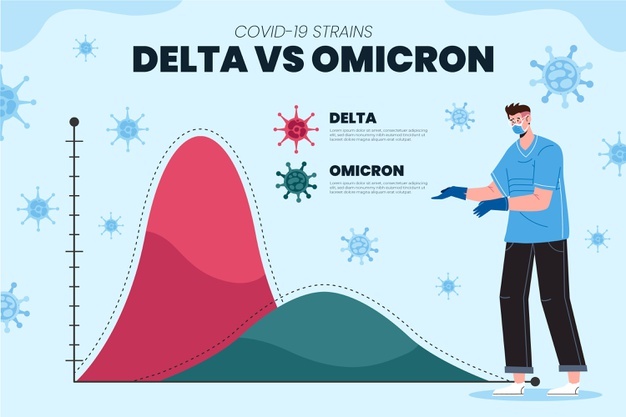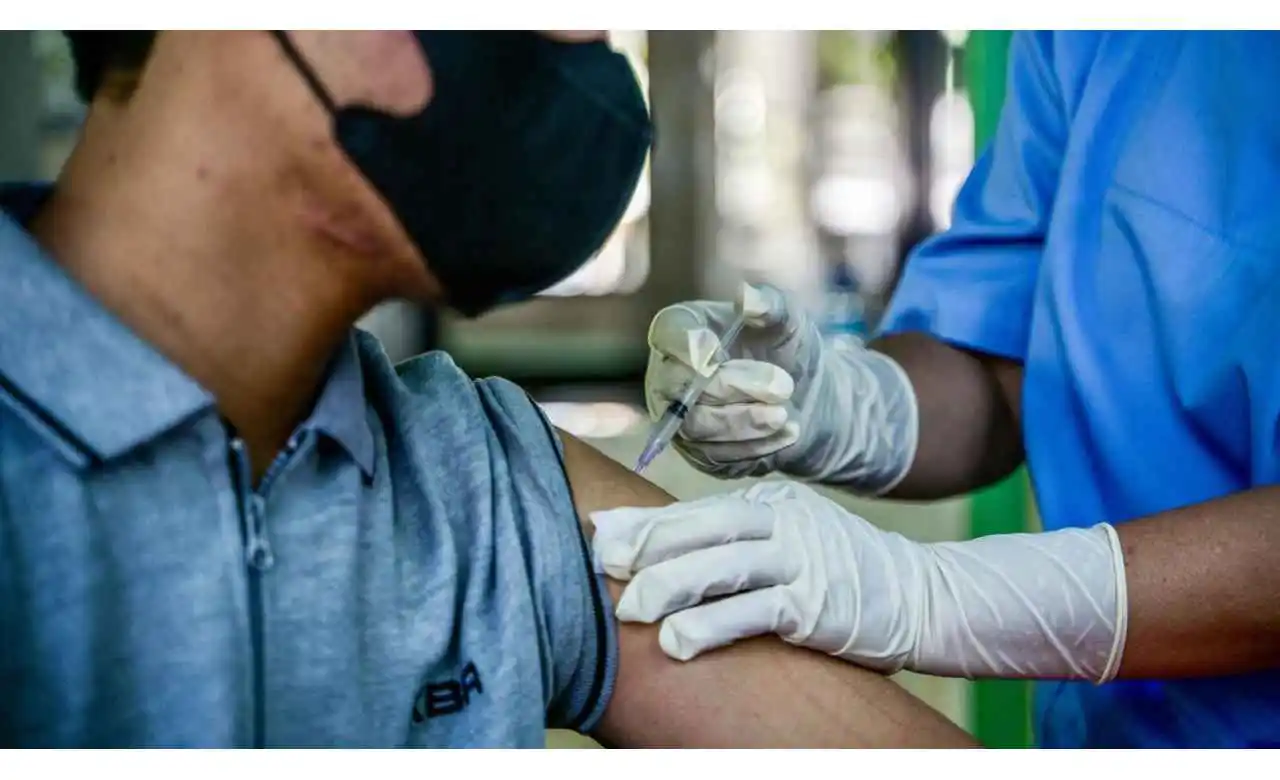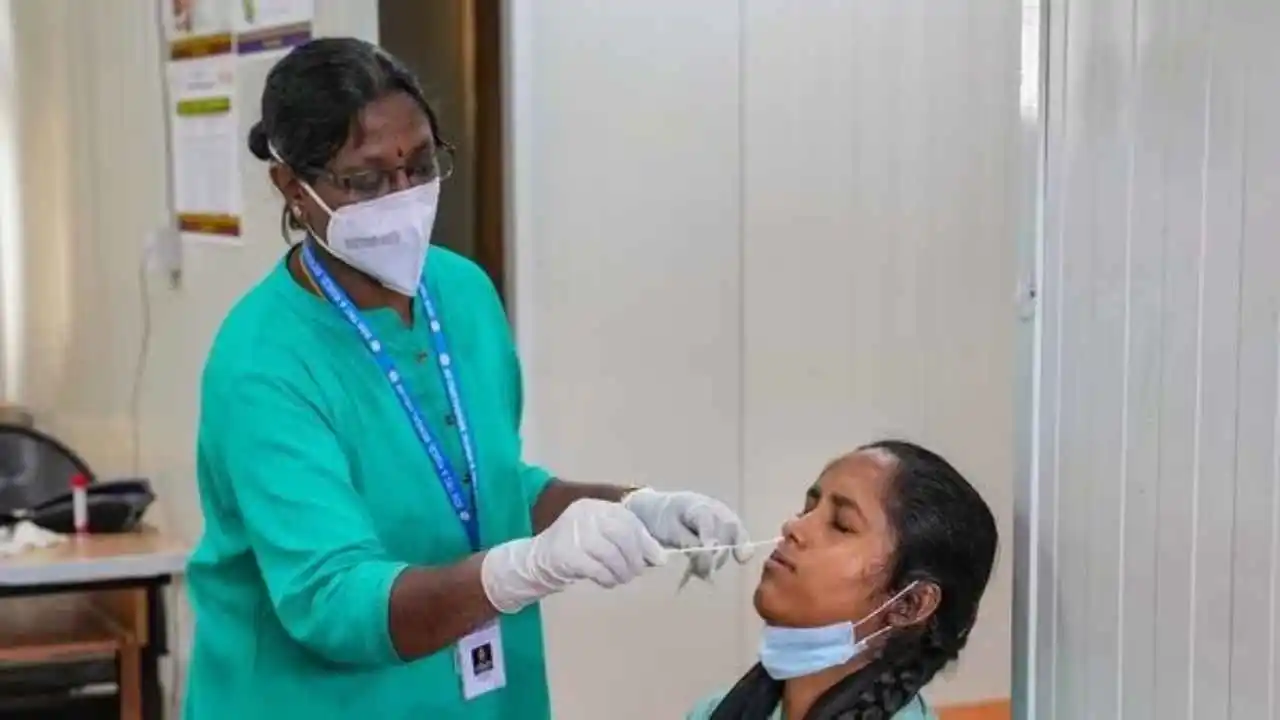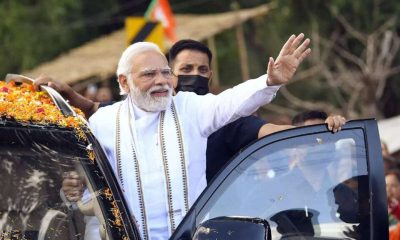Health
Omicron vs Delta comparative analysis: How do you know you are infected with which Covid-19 variant?
With India battling with the third wave and every 1 out of 4 people are catching Covid, it becomes difficult to analyse the variant the one has caught, whether it’s Delta or Omicron.

By Kritika Bobal
Alpha, Beta, Gama, Delta and now Omicron! Ever since the coronavirus pandemic occurred, there is no stopping of Covid-19 variants. When the Covid-19 situation tries to get normal, another Covid-19 variant emerges in the world overwhelming the healthcare system.
When the Covid-19 crisis in the country was heading towards stability after surpassing the second wave, the emergence of the Omicron variant spiked the cases making the situation out of control. With India battling with the third wave and every 1 out of 4 people catching Covid, it becomes difficult to analyse the variant the one has caught, whether it’s Delta or Omicron.
To clear your doubts about Covid-19 variants, read it here.
How to tell which variant have you caught? Omicron or Delta?
Though both the variants are a matter of concern, the Delta strain is severe than the Omicron strain. The hospitalisation numbers and the severity faced during the second wave are comparatively higher than the Omicron wave. According to the doctors and experts, those who have caught the Omicron strain will show mild symptoms, which is clearly not the case with the Delta strain.

Which variant is contagious?
According to a study by Japanese scientists and professors, the transmissibility rate is 4.2 times higher in the Omicron variant as compared to the Delta. Even though the Omicron strain has a higher transmissibility rate but it is less severe than Delta.
In another French study, it was found that the Omicron variant maybe 105% more transmissible than Delta. Considering the data, the Omicron strain has the power to infect a large population in a short span of time.
Omicron vs Delta symptoms
Despite Omicron being a highly mutated variant, it shows mild symptoms. As per doctors of South Africa, individuals infected with the Omicron complained of a scratchy throat and mild body temperature that gets better on its own while those infected with the Delta variant show severe symptoms like Breathlessness, high temperature.
Omicron symptoms:
Cough
Congestion
Runny nose
Sore or scratchy throat
Night sweats
Fatigue
Delta symptoms
Loss of smell and taste
Breathlessness
Persistent fever, cough
Fatigue
Runny nose

Can Covid-19 tests detect which variant you have?
Currently, RT-PCR and rapid antigen tests are used to determine if a person is Covid positive or negative but to check if it is the Omicron variant then gene sequencing is the step ahead.
A comprehensive genetic study, which can take between four and five days, is needed to determine whether a suspected case is Omicron. Scientists can determine if someone is infected with the Omicron or the Delta using the genetic material obtained via testing.
The Indian Council of Medical Research (ICMR) has authorised an RT-PCR test kit called “Omisure” created by Tata Medical and Diagnostics to precisely identify the novel variation in order to reduce delays in genome sequencing to detect the Omicron variant.
Health
India registers 313 new Covid cases, active cases reach 2,041, 3 deaths recorded in last 24 hours
The currently available data suggests that the JN.1 variant is neither leading to an exponential rise in the new cases nor a rise in the hospitalization and mortality.

India saw a single-day rise of 313 new Covid cases, while the active caseload has declined to 2,041, the health ministry said on Saturday. Three deaths: two from Karnataka and one from Maharashtra were reported in the last 24 hours.
According to the ministry website, the number of active cases in the country stood at 2,331 on Friday. The number of cases of Covid had dropped to double digits till December 5, but it began to start increasing after the emergence of a new variant and cold weather conditions.
According to reports after December 5, the highest single day rise of 841new cases was reported on December 31, 2023, which is 0.2% of the peak cases reported in May 2021. Of the total active cases, a large majority of these (around 92%) are recovering under home isolation.
The currently available data suggests that the JN.1 variant is neither leading to an exponential rise in the new cases nor a rise in the hospitalization and mortality. India has witnessed three waves of Covid in the past with its peak incidence of daily new cases and deaths being reported during the delta wave in April June 2021.
At its peak, 414,188 new cases and 3915 deaths were reported on May 7, 2021. Since the pandemic started in early 2020, there have have been 4.5 crore people who have got infected and this has resulted in the death of 5.3 lakh persons in a total time span of four years.
According to the ministry data, the total number of persons who have recuperated from the disease are 4.4 crore with total recovery rate recorded is 98.81%. A total number of 220.67 crore doses of Covid vaccines have been administered in India so far.
Health
India registers 605 new COVID-19 cases and 4 deaths in last 24 hours
The number of people who have recovered from the disease has gone up to 4,44,81,341, an increase of 648 since Sunday morning. In Kerala a 70 year-old male with chronic obstructive pulmonary disease (COPD) and 81year-old male with T2DM and HTN, and in Karnataka, a 48 year old male with CA and TB died, while one person in Tripura succumbed to COVID.

India recorded 605 fresh COVID-19 cases and four deaths in the last 24 hours. The active cases have increased to 4002, while India’s overall COVID case tally stands at over 4.5 crore (4,50,18,792). The death toll was recorded at 5,33,396 with four new deaths – two from Kerala and one each in Karnataka and Tripura – reported in the last 24 hours, the data updated at 8am stated.
The number of people who have recovered from the disease has gone up to 4,44,81,341, an increase of 648 since Sunday morning. In Kerala a 70 year-old male with chronic obstructive pulmonary disease (COPD) and 81year-old male with T2DM and HTN, and in Karnataka, a 48 year old male with CA and TB died, while one person in Tripura succumbed to COVID.
The Indian Council of Medical Research (ICMR) reported that 11,838 doses of the vaccine had been administered in the country till January 7. The data is a compilation of the Integrated Disease Surveillance Programme (National Centre for Disease Control), media bulletins and websites of various states at 8am on January 4.
As the winter season sets in, health experts are highlighting a sudden surge in viral infections, influenza, and COVID-19 cases. Dr Nikhil Modi, a senior pulmonologist at Indraprastha Apollo Hospital, pointed out that the decrease in temperature leads to increase in moisture in the air, low wind speed and also causes an increase in pollution levels. This contributes highly to various infections.
Due to the decrease in temperature the fog combines with the pollution in the air which further leads to the formation of smog. This condition of the atmosphere can cause different types of infections and difficulty in breathing. Both the state and the central government are keeping a close watch on the new Omicron Subvariant JN.1. J.N.1 is a Variant of Interest (VOI) which is under intense scientific scrutiny.
Health
India records 774 new Covid-19 cases, 2 deaths in 24 hours
The number of daily cases was in double digits till December 5 but it started to rise again amid cold weather conditions and after the emergence of new Covid-19 variant, JN.1.

India on Saturday had a single-day rise of 774 Covid cases while the number of active cases stood at 4,187, the Union health ministry said. As many as two deaths – one each from Tamil Nadu and Gujarat were reported in a span of 24 hours. Of the 4,187 active cases, the majority (over 92%) are recovering under home isolation.
The number of daily cases was in double digits till December 5 but it started to rise again amid cold weather conditions and after the emergence of new Covid-19 variant, JN.1. The central government has asked the state government and union territories to maintain a constant vigil amid an upward trend in the number of Covid-cases and the detection of the JN.1 sub variant in the country.
According to reports after December 5, the highest single-day rise of 841 cases was reported on December 31, 2023, which was 0.2% of the peak cases reported in May 2021. A health official said that the JN.1 variant is neither leading to an exponential rise in new cases nor a surge in hospitalisation and mortality in the country.
The Karnataka government has made the Covid test mandatory for those with Influenza like illness (ILI) or Severe Acute Respiratory Illness (SARI). Karnataka Health Minister Dinesh Gundu Rao said more than 7000 tests are being done every day and the COVID positivity rate is 3.82%. The positivity rate in the state has not come down yet.
He said those with symptoms are being monitored and tested. Those who are in isolation at home have been told to take extra care. He added it is expected that the trend of decreasing Covid cases may start next week in Karnataka. India has witnessed three waves of Covid-19 in the past with the peak incidence of daily cases and deaths being reported during the Delta wave during April-June 2021. At its peak 4,14,188 cases and 3915 deaths were reported on May 7, 2021.
-

 2024 Lok Sabha Elections8 hours ago
2024 Lok Sabha Elections8 hours agoLok Sabha election 2024: PM Modi to hold roadshow in Ayodhya
-

 Entertainment8 hours ago
Entertainment8 hours agoKareena Kapoor appointed UNICEF India national ambassador, says it’s an emotional day for her
-

 India News7 hours ago
India News7 hours agoWrestler Bajrang Punia suspended by National Anti Doping Body after failing to give urine sample
-

 Entertainment5 hours ago
Entertainment5 hours agoRanbir Kapoor, Alia Bhatt’s daughter Raha enjoys Sunday outing with Ayan Mukharji, video goes viral
-

 Cricket news3 hours ago
Cricket news3 hours agoIPL 2024: CSK’s Pathirana returns to Sri Lanka due to hamstring injury
-

 Cricket news2 hours ago
Cricket news2 hours agoPBKS vs CSK: MS Dhoni clean bowled for golden duck, Dharamsala crowd goes silent, video goes viral

